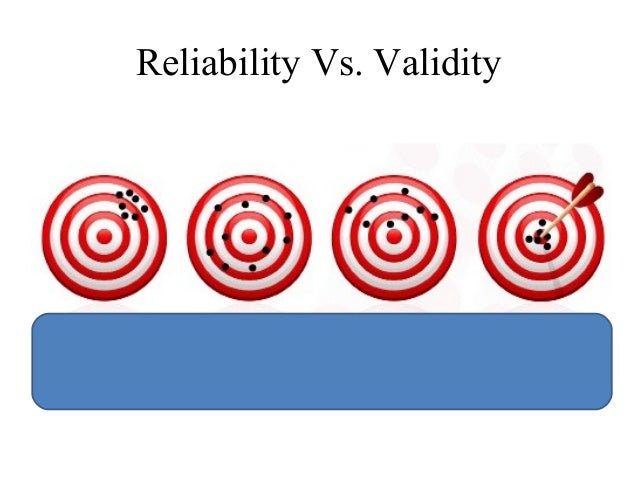

So although there was reliability there was not validity. So the statement that the drink was a milkshake was invalid. When it is delivered, however, his friend from work tastes the drink and declares, “This isn’t a milkshake-it’s an ice cream soda.”Įach day Joe was reliably given the same drink, he however, was not given a drink that fit the description of a milkshake.

They both go into the shop and order what Joe thinks is the reliable milkshake. One day Joe invites a friend from work to join him. Joe loves this because he knows he can walk into this ice cream shop and always get a drink he likes that tastes the same way each time. Every night at about 5:05 pm, the soda clerk gives him a milkshake that tastes just like it did the night before. “Joe walks into an ice cream shop every night at 5 pm and orders a milkshake.

A great example is this story taken from Buelow & Hinkle, (2008). Just because you are given the same results each time you do an experiment at different times it does not mean that it is valid. There are more types of reliability and validity measures but what I wanted to show is that if a research study is reliable, it is not necessarily valid. This is predicted by the correlation between the test and the future event, (Howitt & Cramer, 2011). As such, this means it could be questionable, as to whether face validity is as useful to measure validity because it may subjective opinions. Construct validity is the degree to which test measures the hypothetical construct and this involves developing theoretical and conceptual understanding of the thing being measured. Predictive validity is the ability to measure to predict future events, such as if you go to university with high A Levels will you graduate with a higher degree classification. There are many generally accepted types of validity such as- Face Validity which informally tests whether the measure on the face of things looks like it measures what it intends to measure, an example would be to consult experts, which means this judgment is dependent solely on the experts. Validity is the degree to which a test measures what it is supposed to measure, (Field, 2009). A weakness of this type of test reliability is that it can be difficult to ensure that the two half’s are equal, (Howitt & Cramer, 2011).Īs you can see there are different types of reliability but they all are implemented to test that the consistency of the results, if an experiment provides a significant result, the result needs to be reliable and be consistent over time. It is the extent of which that two of the equivalent versions correlate, (Field, 2009). The Test-Retest method measures the stability of reliability measures between two different points in time an example is of an exam paper by the consistency of the scores of students from two different years when the students took the test at the same age. An example of the internal consistency measure of reliability is the ‘Split Half’ reliability half of the scores should correlate with the other half.

If research is reliable the results will be exactly the same or similar if the measurement was taken again. Reliability is addressed in a variety of ways such as- Equivalent Forms, which are most reliable and are used most often an example of this would be exam papers (such as G.C.S.E exams). Reliability in research refers to the consistency of the results which could be at different points of time or in different circumstances, (Howitt & Cramer, 2011). This blog aims to illustrate why it is not and also evaluate the effectiveness of testing Reliability and Validity. Some individuals believe that if something is reliable, it must be valid, this is not true. “Reliability and validity are the means by which we evaluate the value of Psychological tests and measures.” (Howitt & Cramer, 2011)


 0 kommentar(er)
0 kommentar(er)
